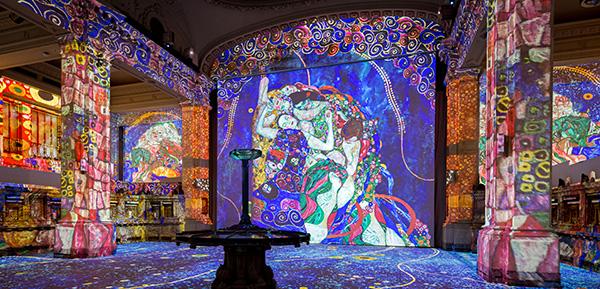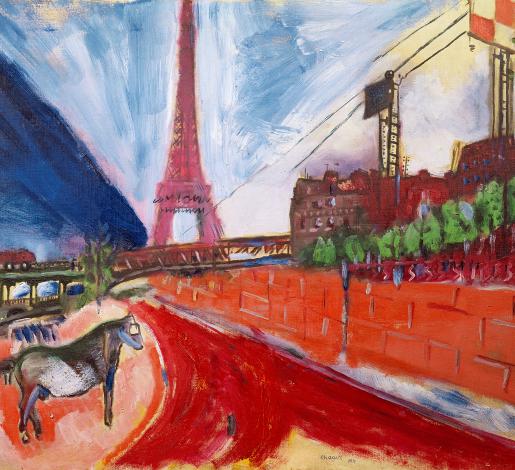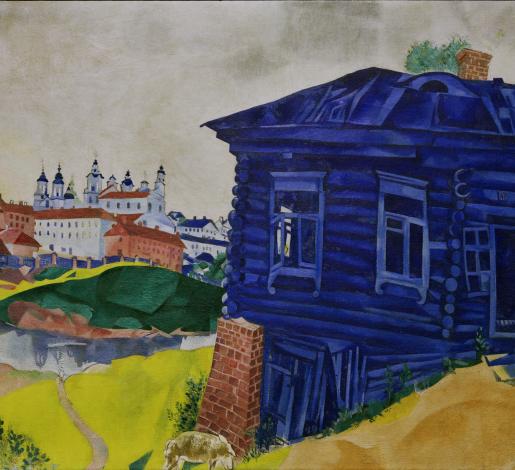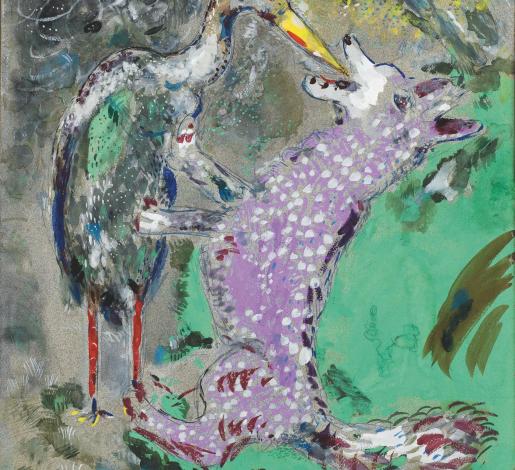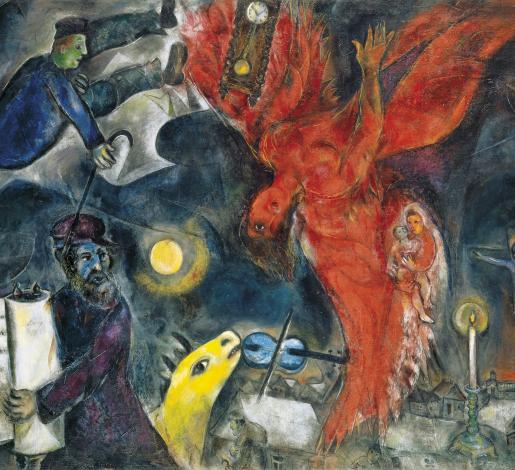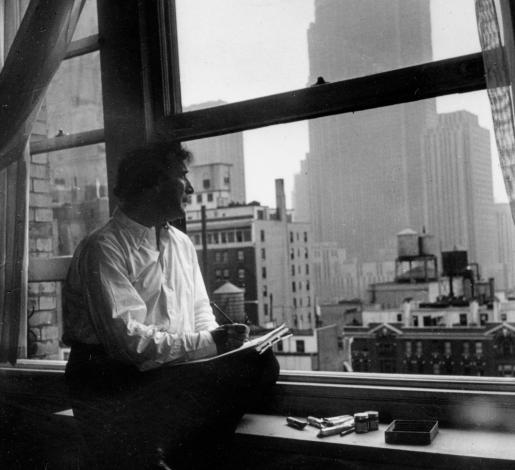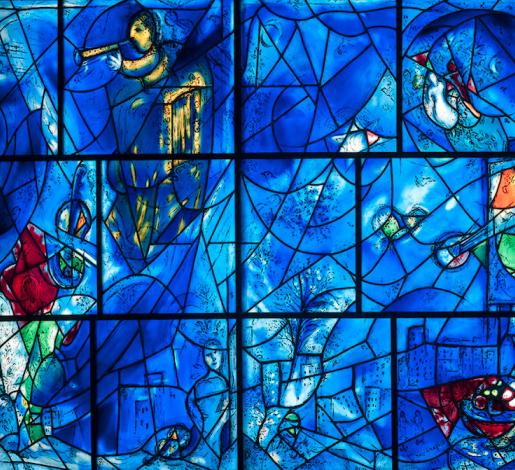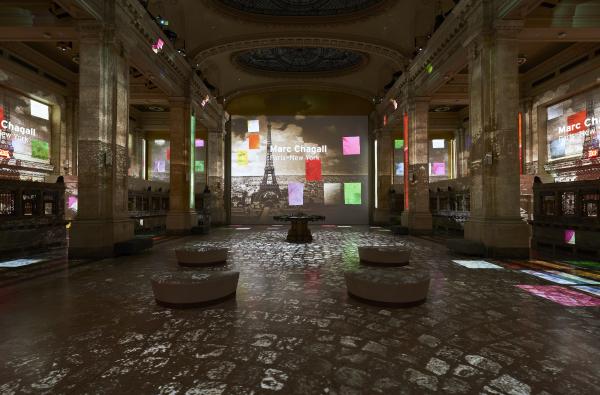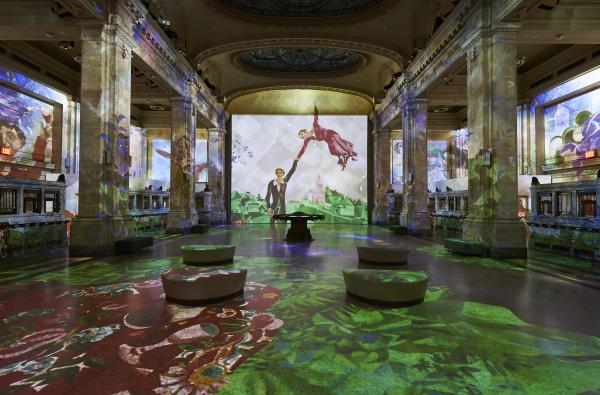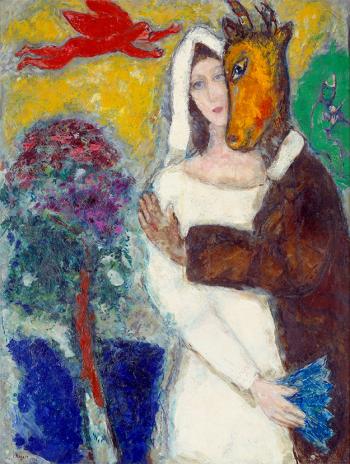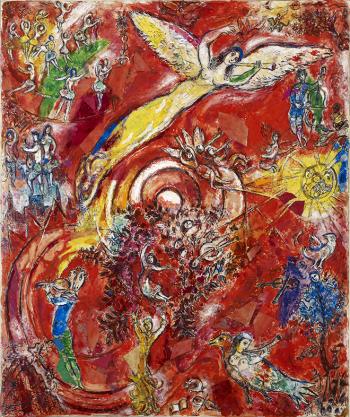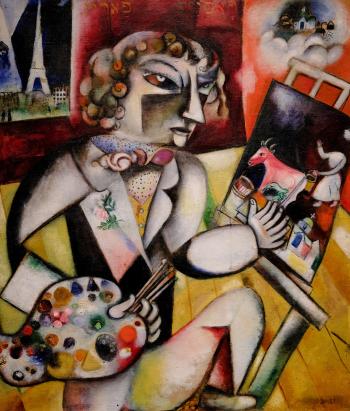Autour de l'exposition
Chagall, Paris - New York
Chagall (1887-1985)
écoutez la playlist de l'exposition
L’œuvre du mois
L’Anniversaire, 1915
Dans L’Anniversaire, Chagall célèbre son amour pour Bella, qu’il vient d’épouser. Le couple resplendit de bonheur, loin du monde et de la guerre qui éclate en Europe. Une vie nouvelle s'ouvre à eux. C'est à St Petersbourg en 1909, que Chagall, alors étudiant en art, a rencontré Bella Rosenfeld, originaire comme lui de Vitebsk. Le peintre raconte son coup de foudre dans son autobiographie Ma vie : « C'est comme si elle me connaissait depuis longtemps, comme si elle savait tout de mon enfance, de mon présent, de mon avenir, comme si elle veillait sur moi, me devinant du plus près, bien que je la voie pour la première fois. » Bella va bouleverser la vie de Chagall. Par son éducation et sa culture, elle lui révèle d'autres formes d'art.
Marc Chagall, L'Anniversaire, 1915, huile sur carton, 80,6 x 99,7 cm, Acquis grâce au legs Lillie P. Bliss (en échange), Museum of Modern Art, New York, Etats-Unis, Photo: Bridgeman Images, © Adagp, Paris, 2023
Les œuvres phares
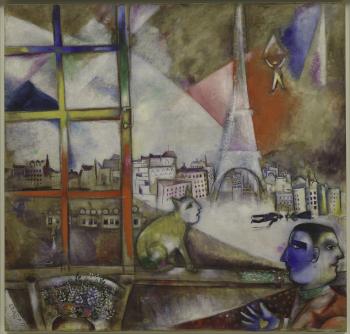
Paris through the Window
Marc Chagall , 1913 , Oil on canvas , 136 x 141,9 cm , Solomon R. Guggenheim Museum, New York, Solomon R. Guggenheim Founding Collection, By gift, The Solomon R. Guggenheim Museum, New York, Etats-Unisation / Art Resource, NY, , Photo © The Solomon R. Guggenheim Foundation / Art Resource, NY, Dist. RMN-Grand Palais / The Solomon R. Guggenheim Foundation / Art Resource, NY , © Adagp, Paris, 2023
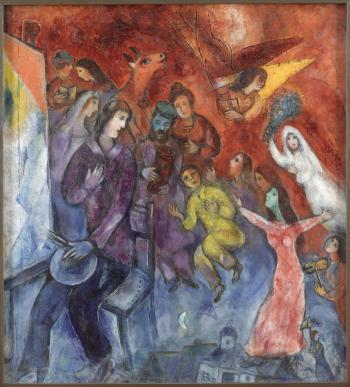
Vision of the Artist's Family
Marc Chagall , 1935-1947 , oil on linen canvas , 123 x 112 cm , Centre Pompidou, Paris, Musée national d'art moderne/Centre de création industrielle. Dation 1988, on deposit at the Palais des Beaux-Arts de Lille, France , Photo © RMN-Grand Palais (PBA, Lille) / Michel Urtado , © Adagp, Paris, 2023
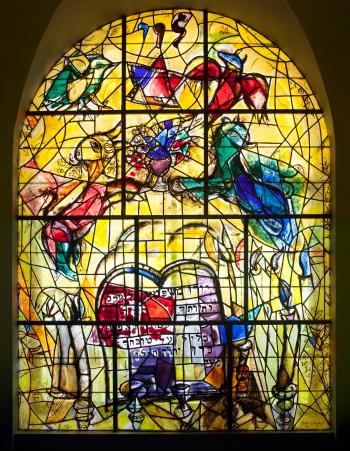
The Tribe of Levi, © Hadassah, the Women’s Zionist Organization of America, Inc.
Marc Chagall , 1962 , Stained glass , Synagogue’s Windows of The Hadassah University Medical Center, Jerusalem , © Photograph by Yuval Yairi. © Hadassah, the Women’s Zionist Organization of America, Inc. , Owns the rights to the photograph and of the Chagall Windows, 2013, © 2023 Artists Rights Society (ARS) / New York / Vitrail de Marc Chagall réalisé en collaboration avec Charles Marq / Adagp, Paris 2023
Prolongez votre découverte
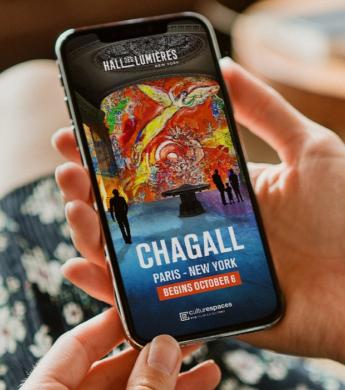
Téléchargez notre application
Cette application, disponible gratuitement sur l'AppStore et Google Play, regroupe les commentaires d'œuvres de nos expositions numériques en cours. Découvrez de manière ludique, grâce à des anecdotes originales, une trentaine d'œuvres de l’exposition « Chagall, Paris – New York ».
Découvrez également les expositions « Dalí, l'énigme sans fin » aux Bassins des Lumières (Bordeaux) et à la Fabrique des Lumières (Amsterdam), « De Vermeer à Van Gogh, les maîtres hollandais » aux Carrières des Lumières (Les Baux-de-Provence).

